All about the rough elm

A rough elm can be a decoration of any garden area. An unpretentious culture requires special care only in the first years after disembarkation, and then it will be able to develop practically "self-propelled", even without requiring insulation for the winter.
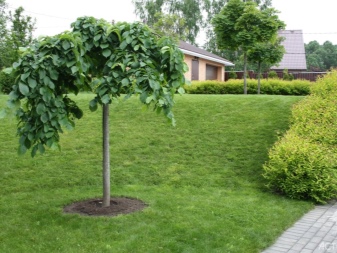
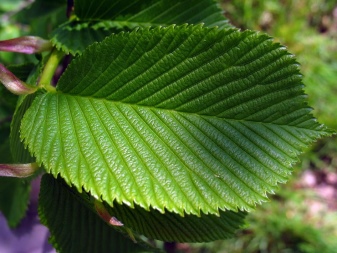
Description
The rough elm, which is often referred to as the mountain elm, belongs to the elm family. The tree grows in a number of European countries, in the Crimea, the Caucasus and Asia Minor. The life form of the plant is characterized by a height of up to 30 meters, as well as a dense crown, the diameter of which sometimes averages 2 meters. The leaf has either an elliptical or ovoid shape, and its length does not go beyond the boundaries of 8-15 centimeters.

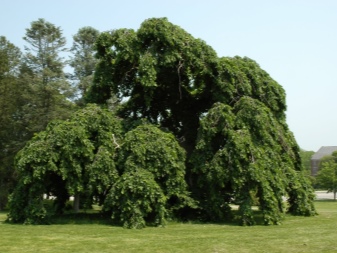
Elm blossoms begin in March or April, and fruiting begins in late spring or early summer. Female flowers on short pedicels form small bunches. Men's anthers have a purple tint. The diameter of the fruit - a rounded lionfish - does not exceed 2.5 centimeters.
Initially pubescent, over time it becomes bare.
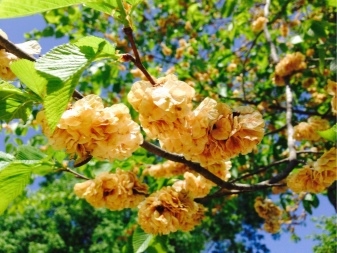
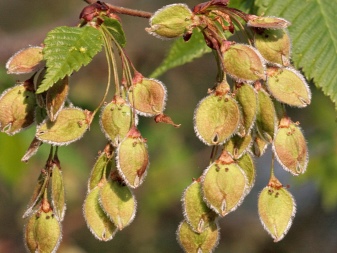
Popular species and varieties
Botanists distinguish three main varieties of the rough elm.
"Pendula"
Pendula elm grows in several European regions and in the United States. The tree stretches to a height of almost 40 meters. The brown bark is dotted with deep cracks and peels along the entire length of the trunk. Large leaf plates have a beautiful dark green tint. Small buds open in late spring. The weeping flat-topped crown consists of branches growing almost horizontally.
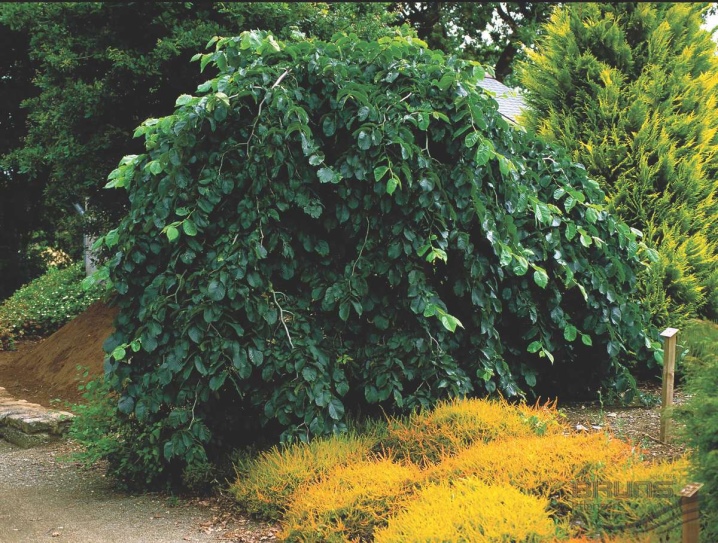
"Camperdouni"
The rough elm "Camperdouni" variety is an ornamental plant, the size of which does not exceed 5 meters. The weeping crown forms a kind of umbrella. Its branches look straight down, but remain slightly pulled apart. Large leaf plates of a dark green color reach almost 15-20 centimeters in length. Miniature flowers have a lilac hue. The flowering of the culture occurs even before the leaves appear.
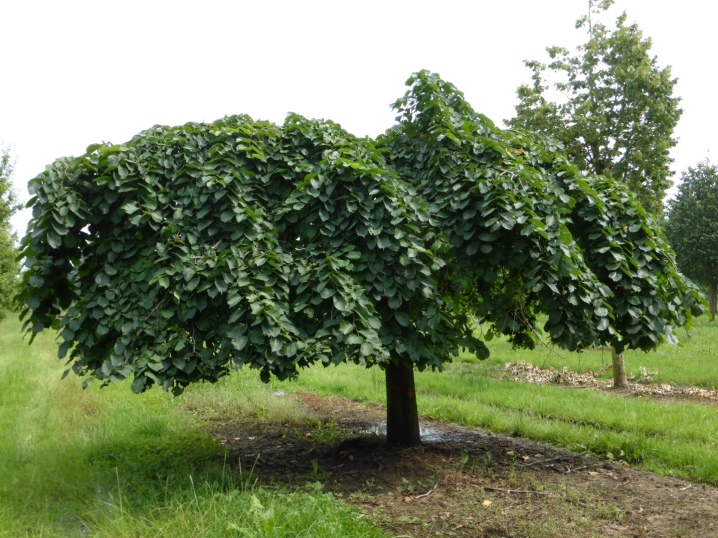
"Weeping"
The height of the rough "Weeping" elm does not exceed 5 meters. Hanging elongated branches are covered with wide ovoid plates. The beautiful green color changes to brownish green over time. Yellow-green fruits form after the flowers fall. The width of the spreading bowl-shaped crown in some cases reaches 10 meters.
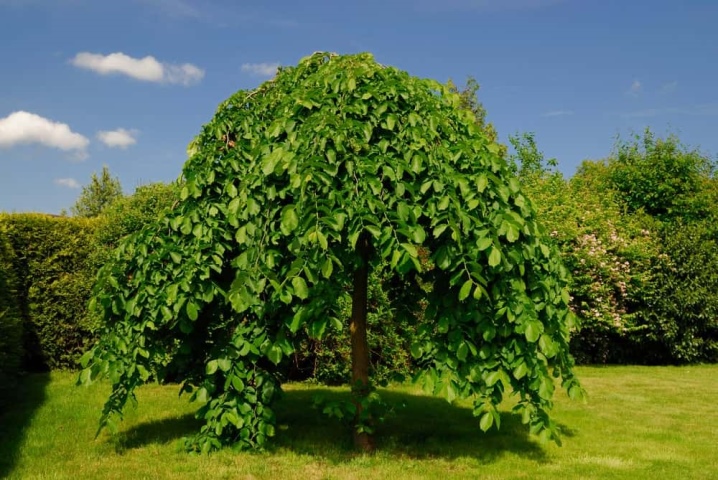
Landing
The rough elm, like other elms, thrives in loose, nutritious and regularly moistened soil. The culture has the following attitude to light: although it calmly tolerates shade, it will feel much better in a bright area. It is customary for a plant to form a soil mixture of sand, manure and compost, taken in equal parts. Elm does not tolerate soil salinization. Before planting, it is recommended to lay out the bottom of the pit with lime, and after placing the seedling inside, do not forget about mulching with peat or sawdust.
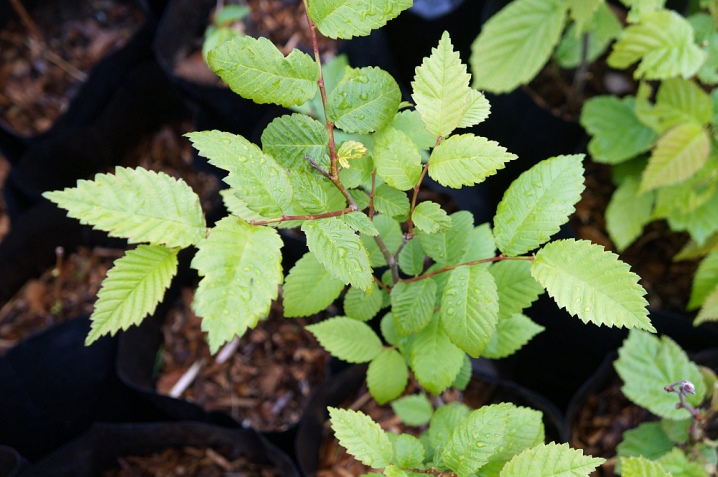
Chopped leaves, hay and pine needles, laid in a layer 5-10 centimeters thick, are also suitable. This mulch will help the soil retain moisture and also stop weeds from spreading. For the first 7 days, the culture requires abundant irrigation, about 30-40 liters of liquid for each specimen. It is important to remember that planting an elm tree near the sidewalk will lead to surface cracks and irregularities.To create an aesthetically pleasing composition, it is better to use the stem planting. By the way, trees should be placed at a distance of at least 5 meters from buildings and in no case under communications.
Pear and currant will become a bad neighbor for the culture, since the risk of "relocation" of pests from them is extremely high.
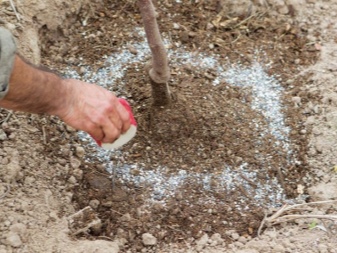
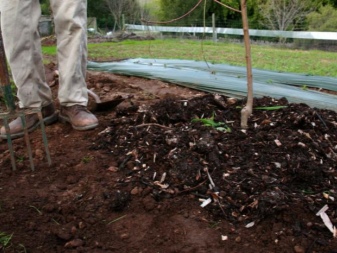
Care
Throughout the growing season, the rough elm needs fertilization. However, experts recommend not doing this immediately after planting, but waiting for next spring. Both universal mineral complexes and organic fertilizers are suitable. In the spring and summer months, they are required to be brought into the trunk circle. It is important to remember that over-feeding is just as harmful as under-feeding. For adults, no longer developing specimens, fertilizing will be enough once every few years. It is better to feed the transplanted trees with biostimulants for better adaptation.
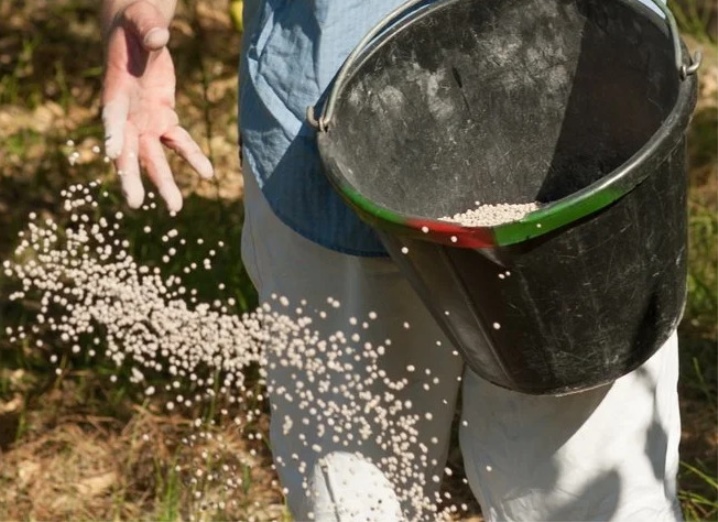
Pruning can make the elm visually appealing. The design of the crown begins only 4 years after the planting of the culture in a permanent place. Until this moment, it will be enough to simply remove the broken and dried branches. Pruning is only allowed at certain times of the year. To prevent open wounds from attracting the bark beetle, which, in turn, will provoke the development of Dutch disease, this should not be done from mid-April until the end of July.
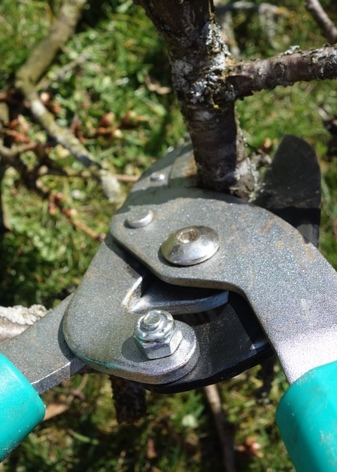
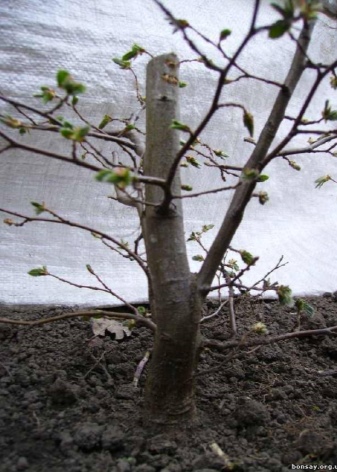
In addition, you should not start the procedure in autumn due to the presence of fungal spores. It is enough to thoroughly prune mature elms once every three years, as well as carry out hygienic pruning in the summer, aimed at improving the tree's health. If the tree is recovering for a long time after the procedure, then, perhaps, it should be carried out less often. The crown of the elm is shaped so that the central shoot stands out. In addition, shoots growing inside the crown are promptly removed.
Cutting places must be processed with garden varnish.

Watering of young elms is carried out once a week, if there was no rain. A couple of years later, irrigation will only be required in dry periods. It will be much more convenient to water the young specimens by burying the end of the garden hose in the ground and letting the water flow slowly for an hour. Another option would be to wet the soil behind the crown line with a hose or use a special device that allows the liquid to be applied directly to the ground near the roots. It is very important to avoid getting drops on the tree trunk. It is important to allow the soil to dry out between irrigations, as the constantly moist soil compresses and interferes with the gas exchange process.
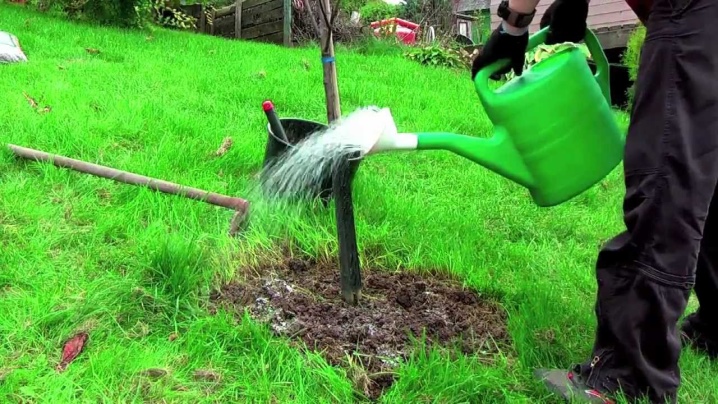
For the first three years, the seedlings require full-fledged shelter during the winter months, and then the rough elm will cope with the cold on its own. If you plan to build something next to the growing rough elm, then it is important to maintain the required distance so as not to damage the root system. Accidental root pruning is likely to lead to fungal disease.
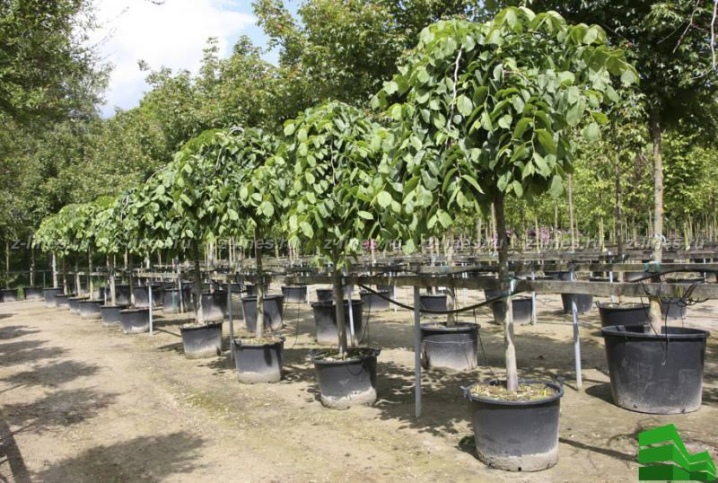
Reproduction
In nature, elm propagates with the help of ripe seeds, which in their appearance resemble nuts with wings. Special shaped lionfish, caught by the wind, fly over great distances. In horticulture, the seed, graft or grafting method is used. To plant cuttings in the spring, they need to be cut in February-March. The length of the branches should range from 12 to 20 centimeters.
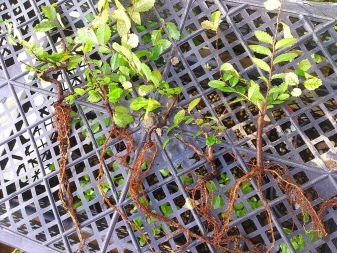
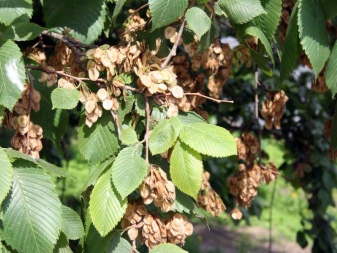
For the first couple of weeks, they will need to be kept in a room with low temperatures, and then put into water, cutting off the bottom layer. You can also first soak the cuttings in a growth promoter, freeing them from the lower leaves, and then transplant them into a container. The optimal rooting mixture is formed from one third of river sand and two thirds of compost. Having slightly deepened the cuttings, it is better to cover them with a film or a transparent container - for example, half a plastic bottle.The container is kept in a warm, light and well-ventilated area. Cuttings can only be planted in open ground next spring.
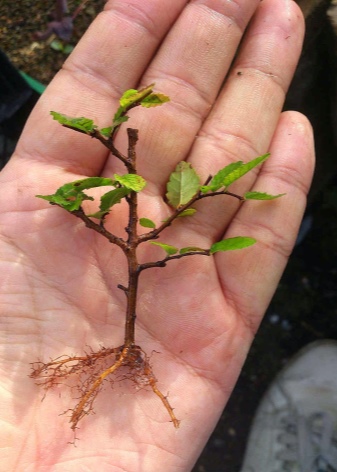
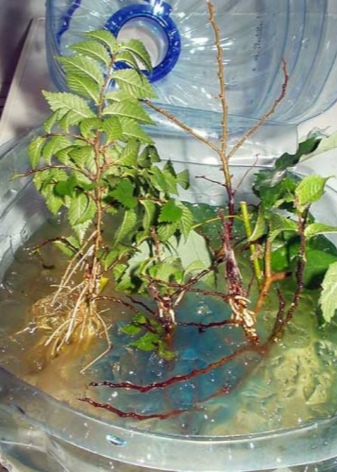
For grafting, it is necessary to use a stock of any breed with its own root system. In May, an incision is formed on the trunk at a height of 1 to 3 meters, into which the stock is then inserted. It is important to do this so that the cut points touch. The area where the graft was carried out must be fixed with an insulating tape, which will remain in place until the stem grows together with the trunk. The first time after grafting, the rough elm is abundantly irrigated using at least a bucket of water. After watering, the ground is loosened, and the trunk circle is mulched.
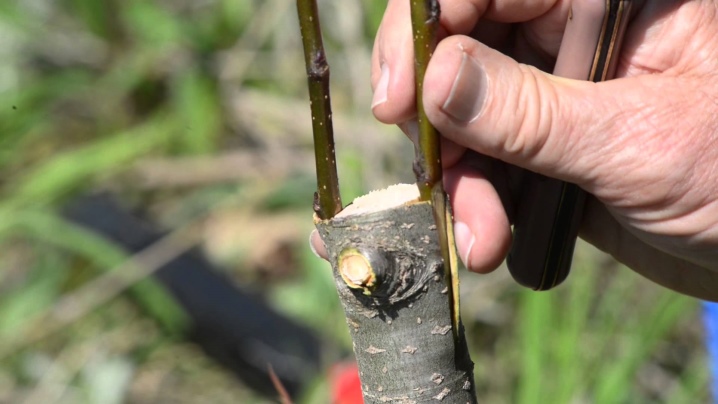
The seed method requires the use of only fully matured material, that is, harvested in the fall. The seeds are first stratified for three weeks by placing them in a mixture of sand and gravel. The filled container is put into the refrigerator and the soil in it is regularly moistened. After the above period, the material can be distributed in separate containers and covered with cling film. The improvised greenhouse is set up in a warm and well-lit place. When the seedlings grow up, they can be moved to open ground.
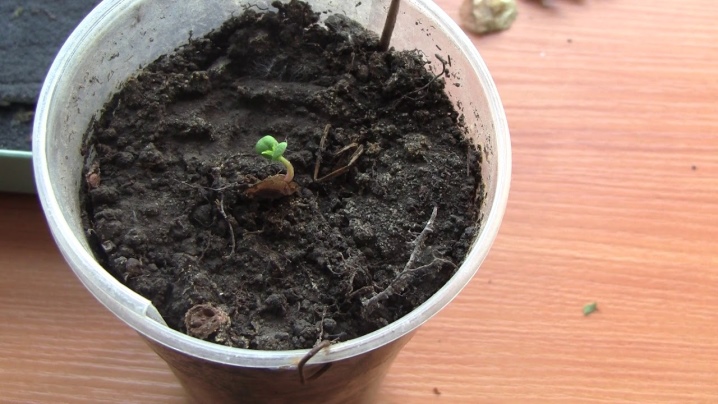
Diseases and pests
The rough elm is often attacked by insects. Quite often, the culture is attacked by the elm leaf beetle - an insect with a dark blue oblong body with three stripes on the back. In addition, the tree becomes a target for the elm springtail - a butterfly, which first skeletons and then eats leaf plates, as well as the elm sapwood - a weevil beetle that carries spores of fungal diseases.
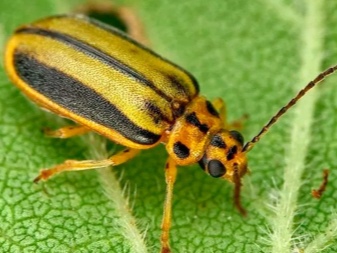
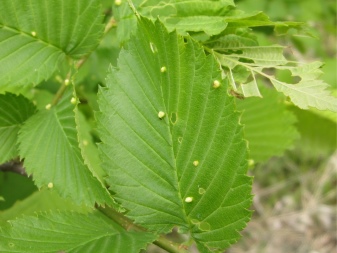
The fact that the elm suffers from pests can be easily identified by its shrinking branches. This crop is often attacked by a fungal disease known as the Dutch disease. First, the vessels are blocked with a substance resembling gum, then the movement of juices stops, finally, the tree dries up and dies.
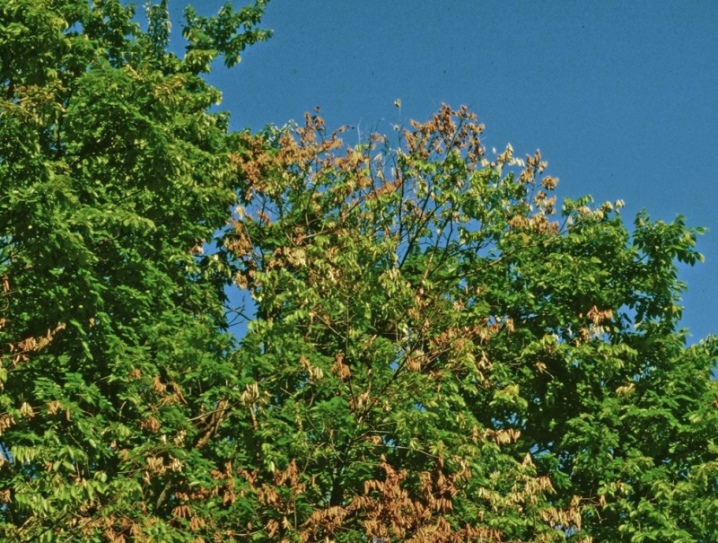
A specimen infected with the Dutch disease cannot be recovered - it will have to be uprooted and then burned. To prevent the disease, it is worth using biostimulants and organic fertilizers. A rough elm can also become infected with a sooty fungus. It is possible to determine the disease by the appearance of black plaque on the leaves and branches of the tree.
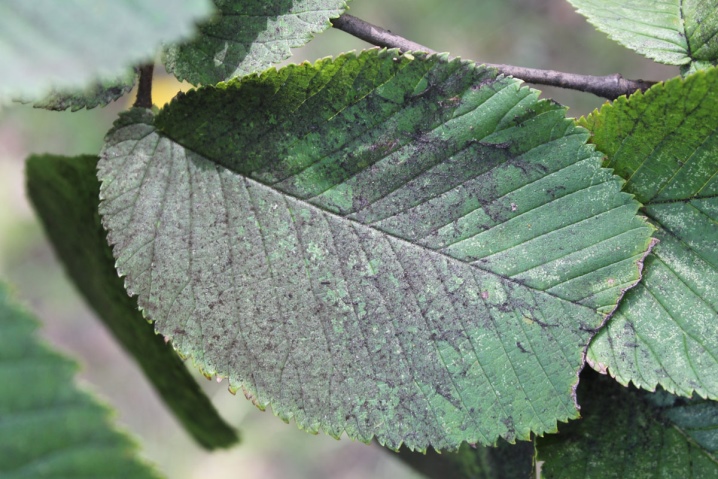
Application
The rough elm is used not only for landscape design, but also as twig feed for livestock, for the production of furniture and in many other industries. In landscape design, culture is used to decorate house plots, alleys and hedges. The crown of trees grows quickly, and therefore the rough elm is suitable for creating giant compositions. The plant fits perfectly into the Japanese rock garden, and also goes well with apple trees, cherries and fieldfare. In the shade of the spreading crown, you can plant lilies of the valley and ferns, or organize a lawn with low grass.
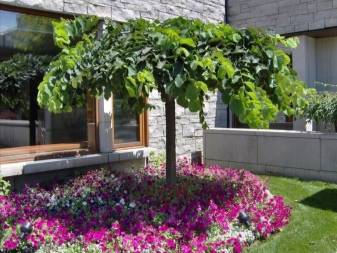
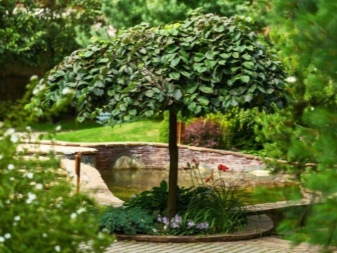
You can find out additional useful information about the rough elm from the following video.



































































The comment was sent successfully.